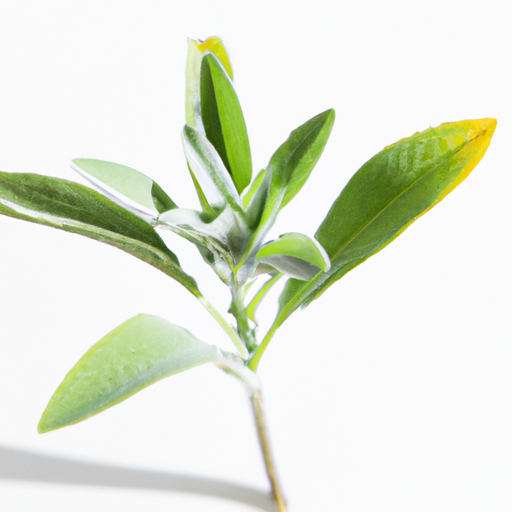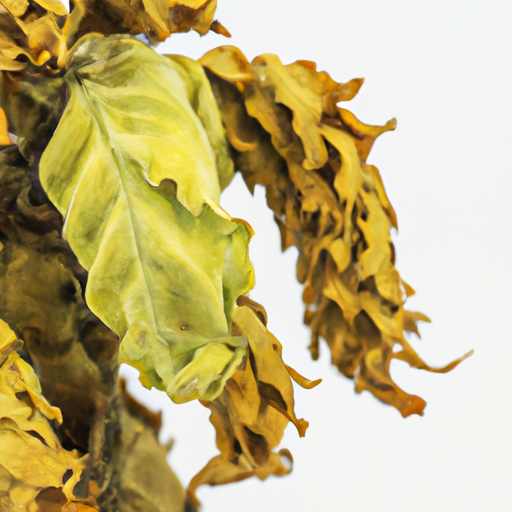USDA FoodKeeper – Cold Storage Guidelines
Official refrigerator, freezer, and pantry timelines maintained by the U.S. Department of Agriculture.
Visit USDA FoodKeeperPineapple sage is a delightful herb that brings a tropical twist to your culinary creations, with its sweet, fruity aroma and vibrant leaves. To enjoy its fresh flavor at its best, keep it stored in the fridge, where it can last up to five days—after that, it’s time to say goodbye for safety’s sake!


Fridge
40°F (4°C)
Wrap in damp paper towel and store in a plastic bag in the fridge
5 days
Wilting leaves, dark spots, foul odor
Garnish for drinks, teas, salads, desserts
Mint leaves or basil leaves
Sure thing! So, when it comes to Pineapple Sage, let's talk about expiration dates versus best quality. The expiration date indicates when it's no longer safe to eat the herb due to potential spoilage or food safety concerns. On the other hand, the "best quality" date suggests that while the herb may still be safe to consume after that date, its flavor, aroma, and texture might not be as vibrant. For example, if you have a bunch of Pineapple Sage that's past its expiration date, I'd advise against using it just to be safe. But if it's past the "best quality" date, you could still use it, but it might not deliver that punch of fresh flavor. Personally, I'd lean towards using herbs within the best quality timeframe to enjoy them at their prime. But hey, a bit past that date won't hurt as long as they still look and smell good!
To determine if Pineapple Sage has gone bad, look for any signs of mold, dark spots, or slimy texture. Also, give it a sniff - if it has a sour or off-putting smell, it's best to discard it. Fresh Pineapple Sage should have vibrant green leaves and a fragrant pineapple scent.
Hey there! Let's chat about Pineapple Sage. While it's a delicious herb that adds a tropical twist to dishes, it's important to be aware of foodborne illness risks. Pineapple Sage, like other fresh herbs, can be a breeding ground for bacteria if not handled properly. If Pineapple Sage is not washed thoroughly before use, it can harbor harmful bacteria like Salmonella or E. coli. Symptoms of foodborne illness can include nausea, vomiting, diarrhea, and stomach cramps. No fun! To keep things safe, always make sure to wash your Pineapple Sage under running water before using it in your recipes. Also, be mindful of cross-contamination - avoid using the same cutting board or knife for raw meats and fresh herbs like Pineapple Sage. I always like to give my herbs a good rinse in a colander before using them in my cooking. It's a simple step that can go a long way in keeping your meals safe and delicious. Remember, a little caution goes a long way when it comes to food safety!
Hey there! Pineapple sage is a delightful herb to have in your garden or kitchen, and storing it properly can help you enjoy its flavors for longer. One cool trick is to trim the stems of your pineapple sage and place them in a glass of water, just like fresh flowers. This can keep them vibrant for a few days. If you want a longer-term storage solution, consider drying your pineapple sage. You can tie the stems together and hang them in a dry, well-ventilated area. Once dried, you can store the leaves in an airtight container to use in teas or recipes later on. For a quick and easy way to preserve pineapple sage, chop the leaves finely and freeze them in ice cube trays with a little water. This is super handy for adding a burst of flavor to drinks or dishes. I personally love adding fresh pineapple sage leaves to fruit salads or infusing them in simple syrups for cocktails. It's a versatile herb that can really elevate your culinary creations!
Hey there! Let me tell you about Pineapple Sage – it's not just your average herb! Did you know that Pineapple Sage got its name from its sweet, fruity aroma that resembles pineapple? It's like having a tropical vacation right in your garden! In Mexican culture, Pineapple Sage is used in traditional herbal medicine to help with digestion and reduce anxiety. Isn't that cool? The plant is also loved by pollinators like bees and butterflies, making it a great addition to any garden to attract these beautiful creatures. Historically, Pineapple Sage was used by the indigenous people of Mexico for its medicinal properties and as a natural flavoring agent. I love how plants have such rich cultural backgrounds, don't you? So, whether you're looking to add a pop of tropical scent to your garden, attract pollinators, or explore its cultural significance, Pineapple Sage is a versatile and fascinating herb to have around. Why not give it a try and bring a little piece of Mexico into your garden?
Pineapple Sage should be stored in the fridge to maintain its freshness and quality. If left at room temperature for an extended period, it may wilt and lose flavor. It's best to discard Pineapple Sage that has been stored at room temperature to prevent any potential food safety risks.
Once Pineapple Sage is cut, its shelf life decreases. It is recommended to use freshly cut Pineapple Sage within 1-2 days for optimal flavor and quality. After this time, the herb may start to show signs of wilting and degradation, affecting its taste and texture.
Pineapple Sage can be stored in plastic containers, but it's best to opt for breathable containers or perforated plastic bags to allow air circulation. Excess moisture can lead to the herb's deterioration. Make sure the container is airtight to maintain freshness and prevent cross-contamination with other foods in the fridge.
Cooking Pineapple Sage can alter its flavor and aroma but doesn't necessarily extend its shelf life. Once cooked, Pineapple Sage should be consumed within 3-4 days if stored in the fridge. Avoid prolonged storage of cooked Pineapple Sage to ensure food safety and quality.
Pineapple Sage tends to have a shorter shelf life in warmer temperatures like summer due to increased humidity and higher temperatures, which can accelerate spoilage. In winter, when the environment is cooler and drier, Pineapple Sage may stay fresh for a slightly longer period. However, proper storage in the fridge is crucial regardless of the season.
When transporting Pineapple Sage for a few hours, it's essential to keep it refrigerated in a cooler with ice packs to maintain its freshness. Place the herb in a breathable bag or container to prevent moisture buildup. Avoid exposing Pineapple Sage to direct sunlight or high temperatures during transit to preserve its quality.
Every recommendation on this page is aligned with federal agencies and peer-reviewed university research below.
Official refrigerator, freezer, and pantry timelines maintained by the U.S. Department of Agriculture.
Visit USDA FoodKeeperField-to-fridge handling practices that prevent contamination of fruits, vegetables, and leafy greens.
Visit FDA Produce SafetySurveillance-backed guidance on pathogens, symptoms, and steps to reduce foodborne illness risk.
Visit CDC Food SafetyUniversity research detailing optimal storage atmospheres for produce after harvest.
Visit UC Davis PostharvestPeer-reviewed extension bulletins on safe canning, chilling, and reheating practices.
Visit Penn State ExtensionNeed deeper reading? Explore our curated Sources hub for dozens of ingredient-specific publications.
Scan your food directly and get instant safety info using our AI-powered camera feature.
Ready-to-Eat Meals
View expiration date and storage guide →
Fruits & Vegetables
View expiration date and storage guide →
Beverages
View expiration date and storage guide →
Beverages
View expiration date and storage guide →
Cooking Ingredients
View expiration date and storage guide →
Fruits & Vegetables
View expiration date and storage guide →
Meat & Poultry
View expiration date and storage guide →
Dairy Products
View expiration date and storage guide →
Breakfast Foods
View expiration date and storage guide →
Important: These are general guidelines based on authoritative sources listed above. Always use your best judgment and when in doubt, throw it out. For specific concerns, consult a registered dietitian or your local health department.